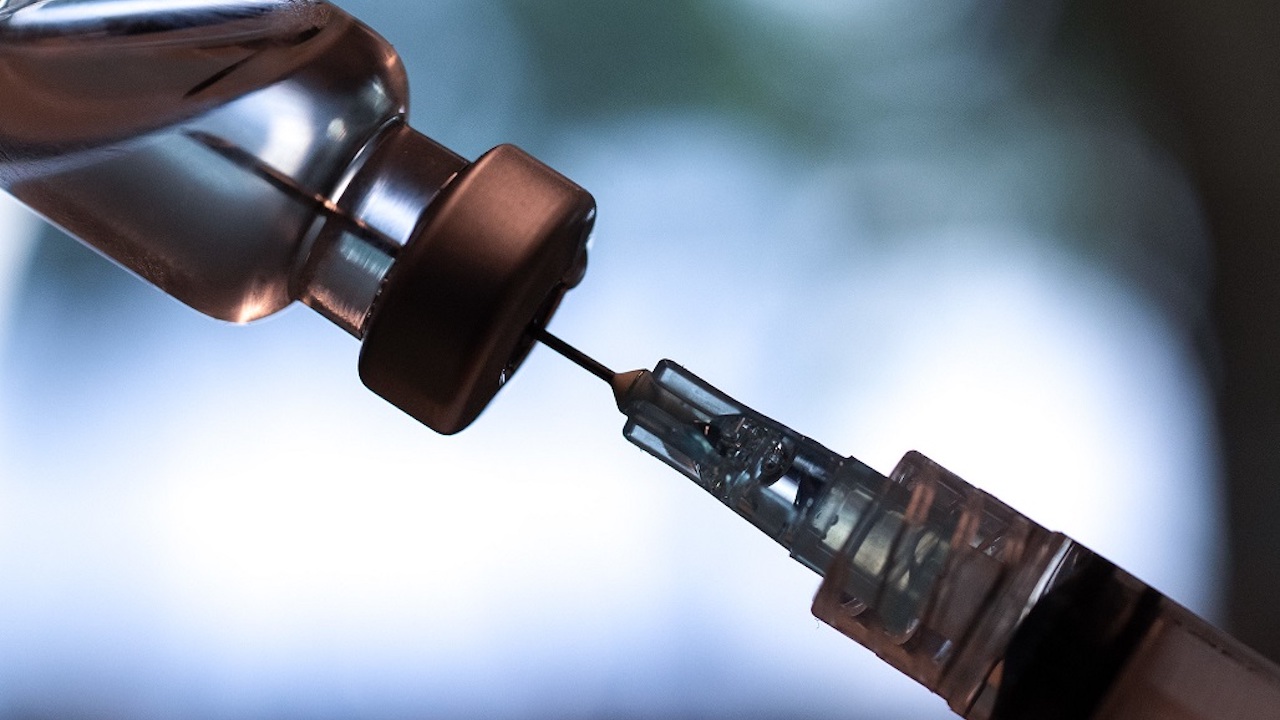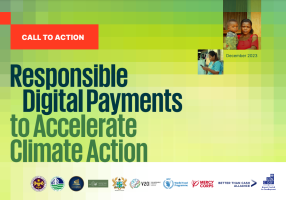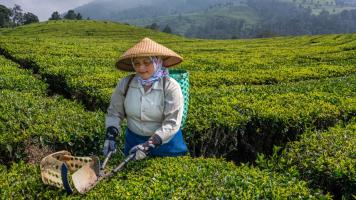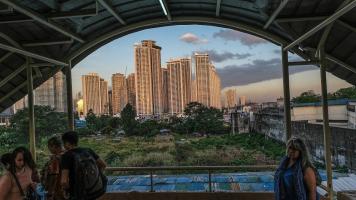
Vaccination reduces risks of getting a disease. Photo credit: ADB.
Here's why a combination of international, regional, and national initiatives is needed to ensure that no one is left behind.
Public vaccination against the coronavirus disease (COVID-19) in BIMP-EAGA countries begins this year.
Like many countries around the world, Brunei Darussalam, Indonesia, Malaysia, and the Philippines are ramping up efforts to secure vaccines to end a pandemic that has claimed too many lives. Vaccines were developed, tested, and given emergency approval in record time, but there are not yet enough supplies for everyone.
International cooperation
International cooperation is key to ensuring equitable access to safe and effective vaccines throughout the world.
“There will be enough vaccine for everyone,” assures Director-General Tedros Adhanom Ghebreyesus of the World Health Organization (WHO). “But right now, we must work together as one global family to prioritize those most at risk of severe diseases and death, in all countries.”
WHO supports COVAX, which stands for COVID-19 Vaccine Global Access and includes a risk-sharing mechanism for pooled procurement to ensure the highest volumes for vaccines that meet the WHO criteria at a reasonable price. COVAX is targeting to deliver at least 2 billion doses by the end of the year, including at least 1.3 billion doses to 92 lower income economies. The first round of allocation for the AstraZeneca(AZ)/Oxford vaccine to COVAX Facility participants was recently released. The vaccine is expected to be delivered through May 2021. Participating countries include the BIMP-EAGA members.
Regional initiatives
In Southeast Asia, ASEAN activated regional mechanisms in response to the COVID-19 crisis, including strengthening cooperation on vaccine security under the ASEAN Vaccine Security and Self-Reliance initiative. It is also establishing a COVID-19 regional fund with contributions from trust funds within ASEAN and dialogue partners.
According to a report by the Vietnam News Agency, the ASEAN Coordinating Council Working Group on Public Health Emergencies agreed during their sixth meeting last February 18 to set aside $10.5 million from the fund to acquire vaccines for equal distribution to the 10 member states.
BIMP-EAGA is a subregion of ASEAN.
In Asia and the Pacific, the Asian Development Bank (ADB) has launched a $9-billion vaccine initiative, called the Asia Pacific Vaccine Access Facility (APVAX). It provides a comprehensive framework and has two components. The Rapid Response Component provides timely support for critical vaccine diagnostics, procurement of vaccines, and transporting vaccines. The Project Investment Component supports investments in systems for successful distribution, delivery, and administration of vaccines along with associated investments in building capacity, community outreach, and surveillance. This may be used for cold-chain storage and transportation and for developing or expanding vaccine production.
At a recent webinar organized by ADB, Eduardo Banzon, principal health specialist at ADB, explains that APVAX’s vaccine access criteria includes demonstrated adverse social, health, and/or economic impact of the pandemic; completion of a needs assessment acceptable to ADB and national vaccination allocation plan that indicates prioritization of vaccine access consistent with international norms and safeguards against exclusion of marginalized and vulnerable groups; and an effective development partner coordination mechanism and a clear role for ADB within this platform.
The Philippines may be the first in the region to avail of this facility. ADB has allocated $25 million to help the government purchase COVID-19 vaccines, which will follow the APVAX access and eligibility requirements, and it is also preparing a follow-on project under APVAX to supplement the financing.
National vaccine rollout
In the same webinar, Director General Jerome H. Kim of the International Vaccine Institute points out that the vaccine is “only a weapon in the fight against COVID, and it needs a comprehensive strategy of prevention, good logistics, an army of vaccinators, and a receptive public.”
Countries must have a strong national deployment and vaccination plan and process in place to ensure optimal access and uptake as well as prevent wastage.
BIMP-EAGA countries are currently in different stages of vaccine deployment.
Brunei Darussalam
Brunei Darussalam has not yet started its COVID-19 vaccination program. According to the ASEAN Biodiaspora Virtual Center, it has 186 confirmed COVID-19 cases as of 27 February, the second lowest among ASEAN members.
The country placed high importance to identifying and deploying safe and effective vaccines against COVID-19. It is participating in the COVAX Facility and has also made bilateral and other arrangements to ensure vaccine access and procurement. In the first round of COVAX allocation, it will be receiving 100,800 doses of the AZ/Oxford vaccine.
Indonesia
On 13 January, Indonesia began its COVID-19 vaccination campaign to inoculate 181 million people or 79% of the population within 15 months, starting with medical workers. It has the greatest number of COVID-19 cases at 1.3 million (as of 28 February) in the ASEAN region.
The country is now in its second phase of its vaccination program, which targets at least 38.5 million people, including senior citizens. It has been using the Chinese vaccine from Sinovac Biotech with Indonesian President Joko Widodo taking the first vaccine shot. It is waiting for vaccines from other companies, including 11,704,800 doses of the AZ/Oxford vaccine from COVAX (first-round allocation).
A report from Reuters says Indonesia plans to allow companies to buy from the government “alternative vaccines from the ones currently being used,” such as Sinopharm, which is also from the People’s Republic of China (PRC).
Malaysia
Prime Minister Muhyiddin Yassin was also the first to be inoculated with the Pfizer-BioNTech vaccine on 24 February, the start of Malaysia’s COVID-19 immunization program.
According to ASEAN data, Malaysia has 300,752 confirmed COVID-19 cases as of 28 February.
The country aims to vaccinate 80% of its 32 million population, initially 500,000 medical and front-line workers. Yet, it has secured more than enough doses from different vaccine producers, including 32 million doses of Pfizer-BioNTech. It offered foreigners living in the country free COVID-19 vaccination but Malaysians will be given priority.
In the first-round allocation of the COVAX Facility, the country has been allotted 1,387,200 doses of the AZ/Oxford vaccine.
The public could register online to the vaccination program through the MySejahtera app or the government’s COVID-19 portal.
Philippines
The Philippines began its COVID-19 vaccination program on 1 March, prioritizing healthcare workers. It has approved three vaccines, Pfizer-BioNTech, AZ/Oxford, and Sinovac, for emergency use but only the PRC’s donation of 600,000 doses of the Chinese vaccine has arrived in the country. The first batch of 525,600 doses of the AZ/Oxford vaccine was supposed to be delivered on 1 March.
The country has the second highest number of COVID-19 cases among ASEAN states at 576,352 as of 28 February. It plans to inoculate 70 million or more than 60% of its population this year.
The Philippines is relying on 44 million doses allocated by the COVAX Facility for delivery within the year. In the first round of allocation, the country should be receiving 4,584,000 doses of AZ/Oxford between now and May. The COVAX Facility list also indicated 117,000 doses of Pfizer-BioNTech, which is based on its interim distribution forecast as of 3 February.
This story was first published by BIMP-EAGA on 4 March 2021.

BIMP-EAGA
The Brunei Darussalam–Indonesia–Malaysia–Philippines East ASEAN Growth Area, or BIMP-EAGA, is a cooperation initiative established in 1994 to spur development in remote and less developed areas in the four participating Southeast Asian countries.


